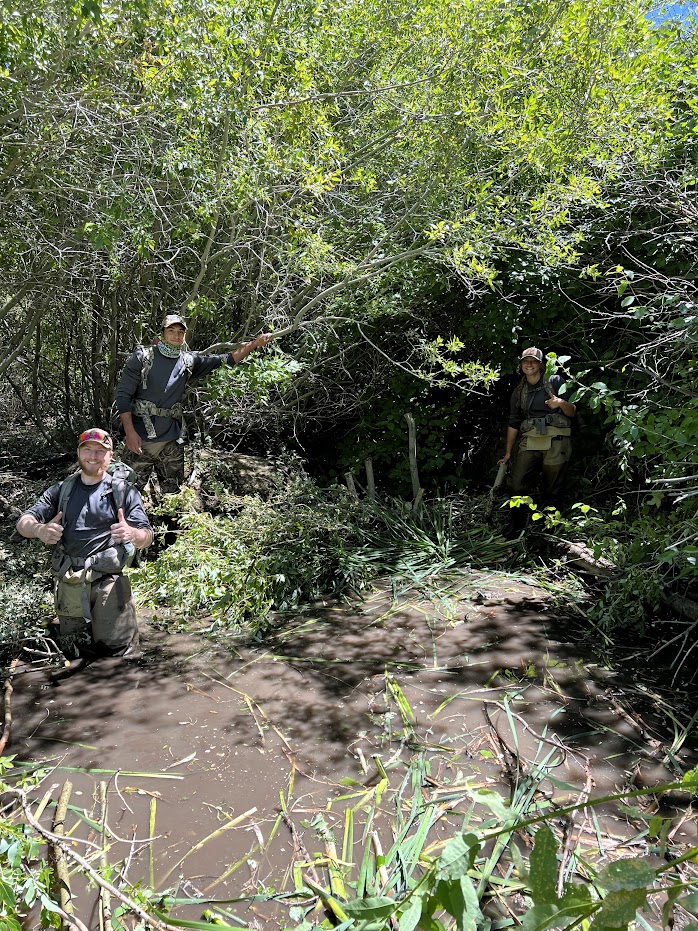Crowley Creek Habitat Enhancement
Project Goals and Objectives
Beginning in 2014, Crowley Creek flows dropped considerably, likely due to changes in precipitation patterns, reduced snowpack, and beaver removal efforts. While successful in intent at the time, the loss of active beaver colonies, large woody debris and beaver dams have lead to a loss of physical complexity and a simplification of instream habitat in the system. Further, an observed decrease in late season flows has been linked to this loss of water storage throughout the system. Many of these issues have likely expedited the decline of the threatened Lahontan Cutthroat Trout in Crowley Creek. For this reason, in 2023, the Nevada Department of Wildlife collaborated with Trout Unlimited, Nevada Division of Forestry, United States Geological Survey, Utah State University, United States Fish and Wildlife Service, and Bureau of Land Management to improve habitat conditions in Crowley Creek via beaver dam analogues (BDAs), and extensively monitor project outcomes. Specifically, USGS and USU surveyed pre- and plan to survey post-BDA installation to better understand the efficacy of BDAs as a habitat restoration tool in small, desert streams. NDOW’s primary goal of this project is to implement and quantify BDA effects in Crowley Creek and to use subsequent results to direct LCT habitat conservation implementation and management. NDOW’s objectives for this project are as follows: 1. Increase the amount of suitable habitat annually available to LCT. 2. Enhance late season stream flows throughout historically occupied LCT habitat. 3. Increase LCT abundance and distribution.
Structure Construction Elements
On July 17th-19th, 2023, TU crews cut and staged woody construction material at several planned BDA or old beaver dam repair locations. Woody material consisted of 1-3in posts cut from mature willow trees and small aspen trees to be pounded vertically into the streambed and ½-1in willow cuttings for weaving between vertical posts. On July 25th and 26th, 2023, structures were installed using staged construction materials and cutting additional woody material as needed. Structures were mostly constructed following design and implementation procedures in Wheaton et al. (2019). Structures were constructed first at the downstream-most locations and built progressively upstream to quickly re-capture any sediment disturbed from instream work in accordance with the above DNA. All woody material was cut using hand saws and loppers. Fence post pounders were used to drive larger diameter posts 2-3 feet into the streambed. Shovels were used to scoop and disperse mud and sediment into the weaved willows during construction. Rock dams were also constructed between 41.82215, -118.02840 and 41.82127, -118.02459 using boulders and shale found near the stream bank. The build crews consisted of personnel from BLM, NDOW, TU, USFWS, NDF, and DCNR. NDOW provided funding for two NDF conservation crew personnel who had BDA building experience. Approximately 16-18 people were present during the build days. All personnel on-site built the lowermost structure together on the first day, and then broke into three crews once staff were trained to install structures. Personnel broke into three crews again on the second build day. Most structure locations are shown in Table 1. DCNR constructed an additional 4-6 structures (not shown in Table 1), but failed to collect structure locations.
Project Photos

Cover Photo
.jpg)